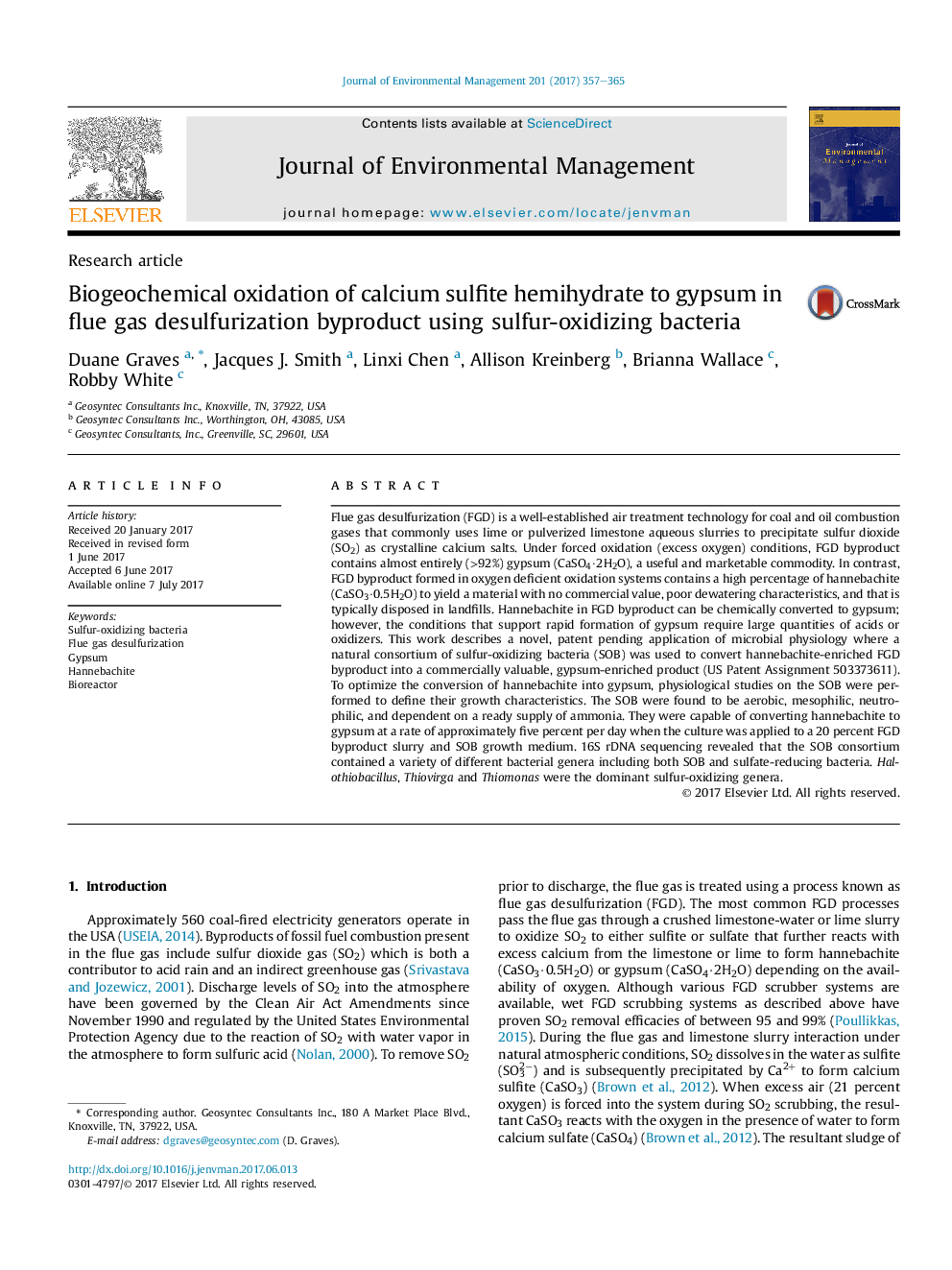| کد مقاله | کد نشریه | سال انتشار | مقاله انگلیسی | نسخه تمام متن |
|---|---|---|---|---|
| 5116592 | 1485216 | 2017 | 9 صفحه PDF | دانلود رایگان |
- We show reclamation of FGD waste high in hannebachite to marketable gypsum.
- The process was mediated using a sulfur oxidizing bacteria (SOB) consortium.
- Optimized process parameters achieved production of approximately 96% pure gypsum.
- 16S rDNA sequencing revealed numerous SOB from within the FGD waste.
- Selective pressure in different bioreactor designs altered SOB species abundance.
Flue gas desulfurization (FGD) is a well-established air treatment technology for coal and oil combustion gases that commonly uses lime or pulverized limestone aqueous slurries to precipitate sulfur dioxide (SO2) as crystalline calcium salts. Under forced oxidation (excess oxygen) conditions, FGD byproduct contains almost entirely (>92%) gypsum (CaSO4·2H2O), a useful and marketable commodity. In contrast, FGD byproduct formed in oxygen deficient oxidation systems contains a high percentage of hannebachite (CaSO3·0.5H2O) to yield a material with no commercial value, poor dewatering characteristics, and that is typically disposed in landfills. Hannebachite in FGD byproduct can be chemically converted to gypsum; however, the conditions that support rapid formation of gypsum require large quantities of acids or oxidizers. This work describes a novel, patent pending application of microbial physiology where a natural consortium of sulfur-oxidizing bacteria (SOB) was used to convert hannebachite-enriched FGD byproduct into a commercially valuable, gypsum-enriched product (US Patent Assignment 503373611). To optimize the conversion of hannebachite into gypsum, physiological studies on the SOB were performed to define their growth characteristics. The SOB were found to be aerobic, mesophilic, neutrophilic, and dependent on a ready supply of ammonia. They were capable of converting hannebachite to gypsum at a rate of approximately five percent per day when the culture was applied to a 20 percent FGD byproduct slurry and SOB growth medium. 16S rDNA sequencing revealed that the SOB consortium contained a variety of different bacterial genera including both SOB and sulfate-reducing bacteria. Halothiobacillus, Thiovirga and Thiomonas were the dominant sulfur-oxidizing genera.
301
Journal: Journal of Environmental Management - Volume 201, 1 October 2017, Pages 357-365
